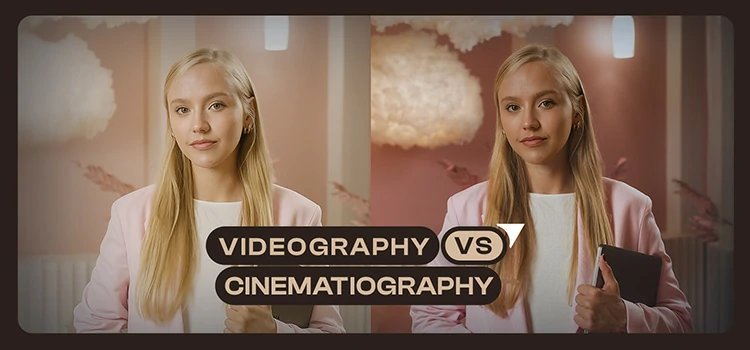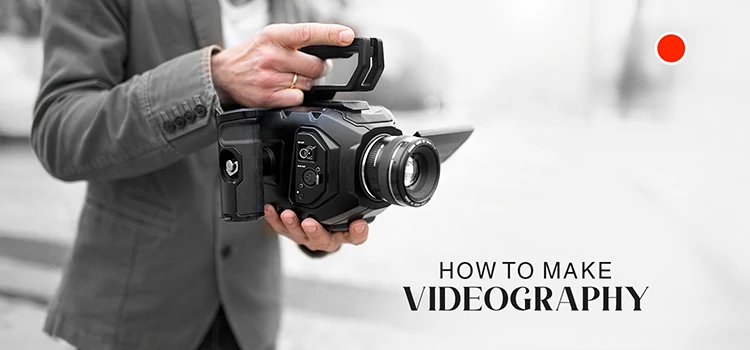8K Video Resolution: Is It Really Worth the Hype?
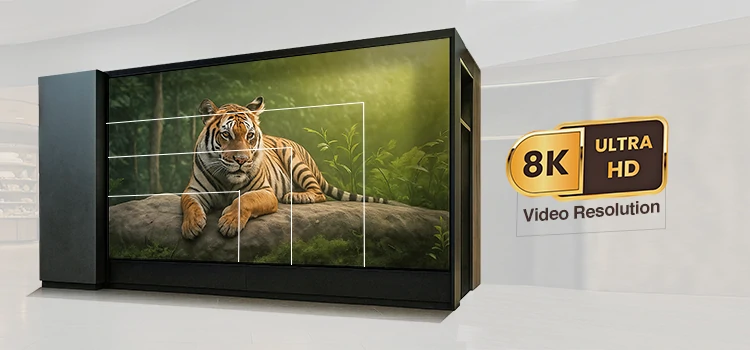
Who can forget the buzz surrounding the introduction of 1080p? The arrival of 4K raised the stakes even further, and now, video resolution– 8K is on the table. 8K is four times 4K and 16 times more detailed than the old Full HD.
Impressive, no? But the real question is, is 8K truly needed? Or is it another pointless and barely noticeable upgrade?
If you’re a tech enthusiast, content creator, or even a filmmaker trying to stay ahead of the curve, this one’s for you. We digress and demystify the 8K video resolution, its utility, and definitively shed light on its worth, if any.
Straight facts, no buzz or fluff. No jargon. No unnecessary words.
Just hard-hitting info to help you conclude and decide whether 8K is your next move or if it’s nothing more than a marketing buzzword.
Thus, let’s dive in.
What Is 8K Resolution?

Okay, let’s be honest! When you hear “8K,” your brain probably goes straight to:
More pixels. Bigger number. Tech stuff.
And yeah… technically, that’s true.
But what if I said 8K lets you see tiny cracks in a leaf? You could even watch a single raindrop fall on a window and see its reflection twist in real time. Would that make you lean in?
Because that’s what it feels like.
So here’s the truth: 8K resolution isn’t just a number. It’s a feeling.
Imagine This: You watch a stunning nature documentary. A hummingbird hovers gracefully in front of a bright flower.
In 4K resolution, it’s beautiful. Crisp. Clear.
But in 8K?
You can feel the way its wings beat so fast they blur; except you don’t see blurring. You see each feather, trembling in the air. The tiny droplets on its beak catch light like diamonds. The way its iridescent throat flashes from emerald to sapphire as it turns.
It’s not just seeing it. It’s being there. That’s what 8K does! Not because it’s flashy, but because it makes you pause.
You forget you’re watching a screen. You forget you’re even in your living room.
But Wait- Why Do We Even Need It?
Let’s get real. We already have 4K. Most TVs are 4K. We love our shows, movies, and gaming. So why push further?
Because we’re not just watching anymore, we want to live inside the story.
So What Is 8K, Really?
At its core:
- It’s 7680 pixels wide and 4320 tall. Yes, that’s over 33 million dots packed into one frame.
- That’s like taking a photo of a city skyline… then zooming in so close you can read the name on a mailbox from a mile away.
But again, numbers alone don’t move people. What moves us is this:
The moment when you realize you’re not just looking at something… you’re inside it.
How 8K Works: Behind the Tech
Think of it like a symphony. Every instrument has to play perfectly at the right time. Otherwise, the music falls apart.
So let’s break down how 8K works! Not with technical terms, but with stories, metaphors, and the kind of real-life moments that make you go, “Ohhh…”
Step 1: The Camera– The First Glimpse of Reality
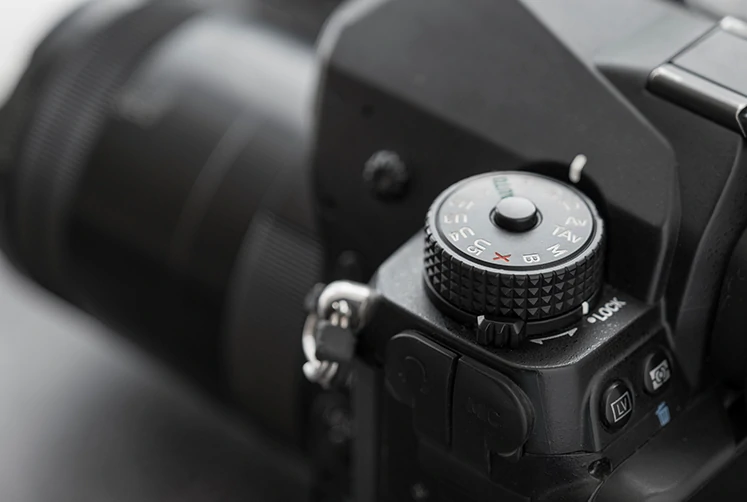
Imagine a filmmaker standing in a quiet forest at dawn. She’s not using a phone. She’s using a camera so advanced it costs more than a car.
This camera doesn’t just record the world- it reads it. It captures every whisper of light, every shadow, every tiny movement in the air. That’s the first piece of the puzzle:
A true 8K camera sees 33 million pixels in every single frame.
That’s like taking a photo of an entire city block… and being able to zoom in on a single leaf and see the veins.
But here’s the catch: Even if the camera can capture that detail, it needs help to store it. Because one second of 8K video?
It’s about 1.5 gigabytes per second. That’s like downloading an entire movie in less than a blink.
So this camera doesn’t just shoot; It screams data at its storage system. “You’re not filming a moment- you’re capturing a universe.”
Step 2: Storage– The Memory That Holds Everything
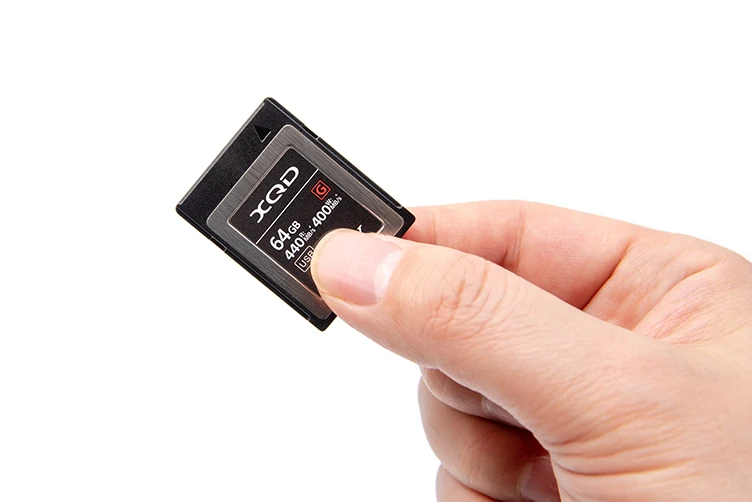
Now, where does all that data go? Not on a USB stick. Not even on a regular SSD.
You need ultra-fast NVMe drives, like rocket fuel for your computer. Because if the storage can’t keep up, the video glitches. The image breaks. The magic vanishes.
And if you’re editing 8K footage? Your laptop better have enough power- or it’ll slow down like a tired horse.
I once watched a filmmaker try to edit 8K footage on a laptop from 2016. After 30 seconds, the screen froze. He stared at it. Then laughed. “I guess I’m not ready to live in the future yet.”
Funny? Yes. But also telling: 8K doesn’t just demand better tools, it demands respect.
Step 3: Editing & Processing– Where Magic Gets Built
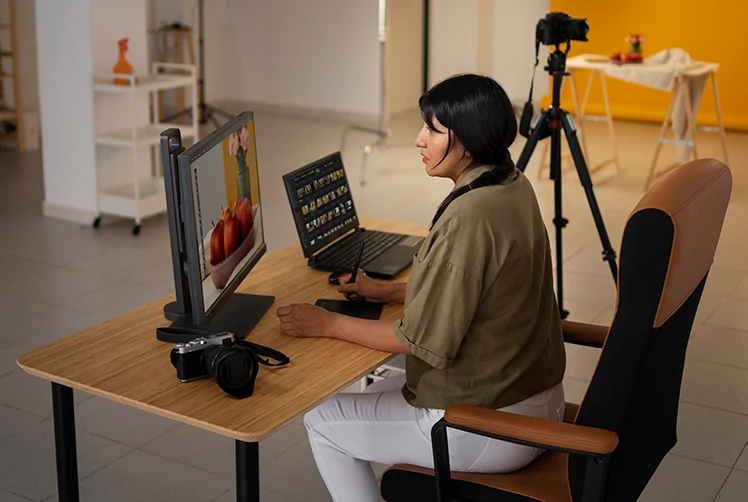
Now comes the real work. Editing 8K is like painting a mural while riding a bike. Every cut, color grade, effect! It’s all happening at lightning speed, and your computer has to keep up.
You’re not just moving clips. Then? You’re adjusting shadows on a bird’s wing. You’re fixing a reflection in a puddle. Furthermore, you’re making sure the wind in the trees looks real, not fake.
And unless your GPU (that’s the graphics chip) is top-tier- like NVIDIA RTX 4090 or Apple M3 Max- it won’t handle it without sweating. Because when you get it right, the viewer doesn’t notice the effort. They just feel like they’re there.
Step 4: Display– The Final Stage: Where You See It All
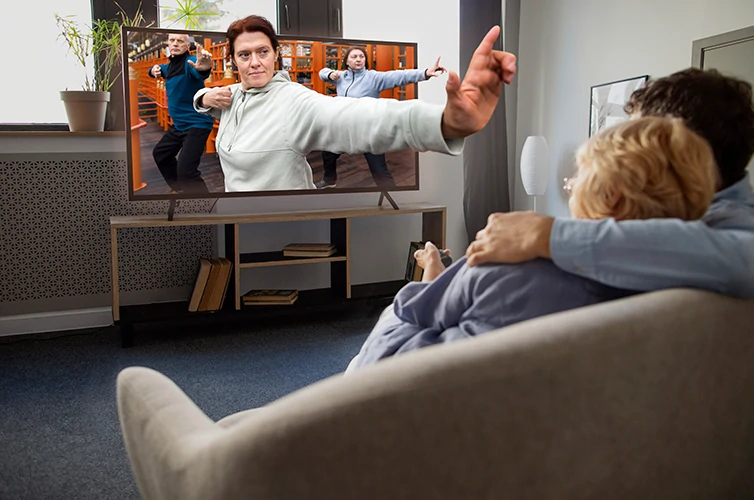
Here’s where things get emotional. You’ve shot it. Edited it. Stored it. Now… you want to watch it. But your TV? If it’s only 4K?
You’re not seeing the full story. The image gets stretched. Details are lost. It’s like hearing a song through a broken speaker. To truly feel 8K, you need:
- A true 8K TV (not just a “4K TV with 8K upscaling”).
- A fast HDMI 2.1 or DisplayPort 2.0 cable.
- And ideally a big screen, at a close distance.
Why? Because 8K isn’t meant to be seen from across the room. It’s meant to be felt like sitting in a theater where the screen fills your whole world.
One friend told me, “I watched an 8K clip of a coral reef. I leaned forward, like I was underwater. I swear I could smell the salt.” That’s not exaggeration. That’s what happens when technology finally matches the depth of our imagination.
The Real Secret? It’s Not One Thing. It’s Everything.
Here’s the thing no one says:
8K doesn’t work because of one breakthrough. It works because all of them work together.
– The camera sees it.
– The storage holds it.
– The processor edits it.
– The screen shows it.
If any one part fails? The magic disappears. It’s like building a house:
– You can have the perfect foundation…
– But if the roof leaks, the whole thing collapses.
So What Does This Mean For You?
You don’t have to be a tech expert. However, knowing how the pieces work together reveals why 8K is more than just a number.
It’s a promise: “We’re getting closer to showing you the world as it truly is.”
And honestly? That’s kind of beautiful.
8K vs Other Resolutions
Numbers like “7680 × 4320” or “33 million pixels” have no meaning without direct comparison. This breakdown clarifies their significance.
|
Resolution |
Pixels | What It Feels Like | Real-Life Use Case |
Your Reaction |
| HD (720p) | 1280 × 720 (~0.9M) | “Wait… is that blurry?” | Early YouTube videos, old DVDs, basic webcams | “It’s okay… I guess.” |
| Full HD (1080p) | 1920 × 1080 (~2.1M) | “Wow, this looks sharp!” | Most Netflix shows, gaming, & smartphones | “Nice! This is clear.” |
| 2K (1440p) | 2048 × 1080 (~2.2M) | “Huh… almost like being there.” | Cinemas (some), mid-tier TVs, & video editing | “Close. But not quite.” |
| 4K (Ultra HD) | 3840 × 2160 (~8.3M) | “Whoa. I can see the texture.” | Premium streaming, gaming, & home theaters | “This feels real.”
|
| 6K | ~6144 × 3240 (~20M) | “Wait… is this a movie or a dream?” | Hollywood filmmaking, high-end VR, studio work | “I want to step inside.”
|
| 8K (True 8K) | 7680 × 4320 (~33.2M) | “I’m not watching… I’m in it.” | IMAX hybrid screens, virtual reality, future-proofing | “I forgot I was on a screen.” |
Why This Matters (The Human Angle)
– HD: You’re watching a story from across the room.
– Full HD: You’re sitting closer. The characters look real.
– 4K: You lean in. You notice the tear in their eye.
– 6K & 8K: You stop breathing. You feel the wind. You hear the silence between heartbeats.
It’s not just pixels dancing on a screen; it’s belief breathing life into the vision. Your conviction ignites the image’s true potential. Within every detail lies a tale, poised and ready to unfold.
Key Insight: It’s Not About Size; It’s About Distance & Purpose
|
Screen Size |
Viewing Distance | 8K Makes Sense? |
Why? |
| 55″ TV | 8+ feet away | ❌ No | Too far to see the detail |
| 65″ TV | 6–8 feet | ⚠️ Maybe | Better than 4K |
| 75″+ TV | 5–7 feet | ✅ Yes | You can see the difference |
| 100″+ Screen | 6–9 feet | ✅✅ YES | Where 8K truly shines |
So, what’s the grand takeaway? Instead of comparing, let’s connect. You don’t have to claim every resolution as your own. However, grasping them illuminates what truly matters to you.
– Want clarity? Go 4K.
– Want cinematic depth? Try 6K/8K.
– Want something that feels like real life?
Then 8K isn’t just an upgrade. It’s a doorway.
Devices That Support 8K: The Real-World Players
Let’s be honest: When you hear “8K,” you might picture a glowing TV or a Hollywood camera rig. But here’s the truth no one tells you: 8K isn’t just one device. It’s a team. A whole ecosystem.
And not every device is built to carry it. Some are like sprinters; fast but short-lived. Others are comparable to long-distance runners: unyielding, fit, ready for the long run.
So let’s meet the players. Not with specs. But with stories.
1. 8K TVs: The Living Room Stage
You’ve seen them. Big. Beautiful. Expensive. They’re not just screens; they’re windows into another world.
Who They’re For:
– People with large living rooms.
– Fans of cinema at home.
– Those who want to feel the story, not just watch it.
Top Picks (Human Edition):
- Samsung QN900C – Like a window into the future. Smooth, bright, immersive.
- LG OLED C3 / C4 (8K version) – Deep blacks, rich colors. Feels like light itself is alive.
- Sony A95K – Built for cinephiles. Sounds as good as it looks.
2. 8K Cameras: Where the Magic Begins
These aren’t your phone cameras. They’re tools of storytellers.
With 8K cameras, the wilderness comes alive. A mountain lion’s sharp whiskers shine brightly, showing off nature’s beauty like never before.
Who Uses Them?
– Filmmakers making documentaries or features.
– Wedding videographers who want to preserve every emotion.
– Nature photographers chasing perfection.
Top Picks (Human Version):
- Sony FX6 – Lightweight, cinematic. Used in Dune, The Last of Us. Feels like a tool, not a machine.
- Blackmagic Pocket Cinema Camera 6K (with 8K mode) – Affordable for pros. Looks like a toy, shoots like a legend.
- RED Komodo 8K – For filmmakers who want to push boundaries. Heavy, expensive, but worth it when you need truth.
3. 8K PCs & Laptops: The Editors’ Secret Weapon
Let’s be real: Editing 8K footage on a laptop from 2018?
It’s like trying to paint a mural with a toothbrush. You need power. Speed. Storage. Coolness.
Who Needs This?
– Video editors.
– Animators.
– Content creators building high-end films or VR experiences.
Best Machines (Human-Friendly Picks):
- Apple M3 Max MacBook Pro (16″ or 14″) – Handles 8K like it was born for it. Silent. Fast. Gorgeous.
- Dell XPS 17 with RTX 4090 – For Windows lovers who want raw power.
- Custom PC Builds (with NVMe SSDs + RTX 40-series GPU) – The ultimate playground.
4. Gaming Consoles & PCs: The Future of Immersion
Games now run at 8K resolution. Every blade of grass moves under your character’s feet, making the virtual world feel alive.
Where the reflection in a puddle changes based on the time of day. Where the enemy’s armor shows every scratch, every dent, every fingerprint.
That’s 8K gaming.
Who’s Using It?
– Hardcore gamers with big screens.
– Early adopters who live for immersion.
Supported Devices:
- Xbox Series X/S: Experience gaming like never before with 8K brilliance via HDMI 2.1.
- PlayStation 5: Dive into select titles with its tantalizing limited 8K support.
- High-end gaming PCs: Command the virtual realm with an RTX 4090 and 8K monitor.
5. Streaming Platforms & Phones: The Missing Pieces
Here’s the hard truth: You can’t stream 8K on most phones. And even on platforms like YouTube or Netflix? You’re lucky if you find one 8K video.
Why? Because bandwidth is still catching up. And most people don’t have the devices to play it.
Reality check: Right now, 8K is more of a “future-proofing” move than a daily experience.
But that’s okay. Sometimes, people don’t intend for the best things to be used today. People are meant to dream about them.
8K Content Creation: Who’s Using It?
Let’s be honest- not everyone’s shooting in 8K. But the ones who are? They’re not playing around.
Big names in Hollywood, top documentary teams, and serious content creators use 8K cameras to prepare for the future. Why? The footage is incredibly detailed. You can crop, zoom, and reframe without losing quality.
Here’s where 8K is making moves:
Hollywood & Filmmakers
Industries and filmmakers both value 8K for certain tasks. It aids in editing and reshoots, especially for panning, zooming, and stabilization. Editors appreciate the extra options, even if the final film is in 4K.
Documentary & Nature Videographers
Videographers and wildlife filmmakers can capture nature in stunning ultra-high resolution. They film leopards blinking in mesmerizing 8K slow motion. Each frame is like a clear airplane window to the world.
Commercials & High-End Advertising
Brands that sell luxury cars, watches, or tech gadgets want their visuals to scream quality. Shooting in 8K allows them to showcase every detail from the stitching in leather to the gleam of a logo. It’s storytelling at a higher level.
YouTubers, Creators & Influencers
Yes, even some YouTubers have entered the 8K arena. Especially those doing travel vlogs, tech reviews, or cinematic content. They’re not just chasing trends; They’re creating standout videos in a saturated feed.
Sports Broadcasting (Early Adopters)
Sports networks are testing 8K for major events. Imagine seeing every bead of sweat in a World Cup final or the tiniest movement in a tennis swing. 8K makes the action feel more alive, and broadcasters know it.
The Real Truth: 8K Isn’t for Everyone. But It’s for the Right People.
You don’t need 8K to make great content. But if you’re someone who:
– Cares about details,
– Wants to connect, not just inform,
– Believes stories deserve to be seen in full depth…
Then 8K isn’t a tool. It’s a promise. It says:
Your moment matters. Your audience deserves to feel it. Let me help you show it.
8K Video Editing: Software & Workflow
Let’s be honest: You’ve shot 8K footage. That’s awesome. But then you open your video editing software… and your computer starts whining like it just ran a marathon through a desert.
Welcome to the world of 8K editing, where “smooth” is a dream, not a default setting.
But here’s the silver lining: it’s entirely within reach. Armed with the right tools and clever tricks. Plus, with a sprinkle of patience, you can conquer 8K editing without losing your sanity.
So let’s break it down to what works.
First: You Need the Right Hardware (No Excuses)
Editing 8K isn’t like editing a YouTube vlog. It’s more like running a high-speed data factory in your living room. Here’s what you actually need under the hood:
CPU: Choose Intel i7/i9 or AMD Ryzen 7/9. More cores mean glorious multitasking.
GPU: A powerful GPU is essential. Opt for NVIDIA RTX 4080/4090 or AMD Radeon RX 7900 XTX for the win.
RAM: Minimum 32GB. If you’re working on long projects or using effects, aim for 64GB.
Storage: NVMe SSDs only. 8K files are massive. So, don’t even think about HDDs. Use external drives for backup.
Cooling: Your system will get hot. Make sure fans are clean and airflow is good. Overheating kills workflows.
Best Video Editing Software for 8K (Real Talk)
Not every editor handles 8K well. Some crash. Some lag. And, some make you want to throw your monitor out the window. These are the ones pros use, and they work:
|
Software |
Why It Works |
Best For |
| DaVinci Resolve (Free + Studio) | Super optimized for 8K, especially with GPU acceleration. | Editors who want pro features without paying $30/month. |
| Adobe Premiere Pro | Handles 8K well with proxy workflows and GPU support. Integrates with After Effects, Audition, etc. | Creators already in Adobe’s ecosystem. |
| Final Cut Pro (Mac only) | Built for Apple silicon. Runs 8K smoothly, even on M3 Max MacBooks. | Mac users focused on efficiency and speed. |
| Avid Media Composer | Industry standard in film and TV. Powerful but steeper learning curve. | Professional editors in broadcast and feature films. |
Workflow Tips That Save Time (And Sanity)
Even with great gear, 8K can slow you down. Here’s how to stay ahead of the chaos:
1. Use Proxy Files
Create lower-res versions (like 1080p) for editing. Work with those until the final export.
→ Saves CPU/GPU load.
→ Keeps your timeline smooth.
→ Switch back to full quality at the end.
2. Keep Your Footage Organized
8K files are huge. Name them clearly. Use folders by date, scene, or project.
→ Don’t waste time hunting for a clip that’s buried in “Clip_001.mp4”.
3. Turn Off High-Quality Playback
While scrubbing through clips, disable “high-quality playback.”
→ Reduces strain on your system.
→ Lets you move faster.
4. Render in Chunks
Don’t wait until the last minute. Render sections of your timeline as you go.
→ Catches issues early.
→ Prevents crashes at 11 PM when you’re trying to deliver.
5. Use Fast External Drives
Keep your raw footage on an external NVMe SSD. Never edit directly from a slow drive.
→ Avoids dropped frames and stuttering.
6. Update Drivers & Software
Outdated GPU drivers cause crashes. Update regularly- especially if you’re using DaVinci or Premiere.
> Real story: I once spent 3 hours fixing a render issue caused by outdated GPU drivers.
> Lesson learned: Check your drivers first.
The Future of 8K: Trends & Predictions
Let’s be real: 8K isn’t mainstream yet. Most people still watch 4K.
Most content is 4K, as well the TVs are. But here’s what’s happening behind the scenes! And why 8K is not just a passing trend.
1. More Affordable 8K Devices Are Coming
Right now, 8K TVs and cameras are expensive.
But remember:
– 4K used to cost thousands, too.
– Now it’s standard on mid-range TVs.
As demand grows and manufacturing scales up, prices will drop.
Expect:
– By 2026–2027, 8K TVs measuring 65 inches and larger will be budget-friendly.
– 8K cameras under $2,000 will make their grand entrance for beginners.
– Smartphones with 8K video recording (already happening in some flagships).
2. Streaming Platforms Will Catch Up
YouTube already supports 8K uploads. Netflix and Amazon Prime are testing 8K content, mostly documentaries and sports events. Why?
Because:
– They want to future-proof their libraries.
– They’re building infrastructure for immersive experiences.
– They know viewers will demand higher quality.
3. 5G, Fiber & Wi-Fi 7 Will Make Streaming Possible
8K files are massive; one minute can be 1.5 GB/sec. To stream it smoothly, you need insane bandwidth:
– 5G mmWave
– Fiber-optic internet (1 Gbps+)
– Wi-Fi 7 (coming soon)
When these become common, buffering will stop being a problem. You’ll be able to stream 8K movies without waiting.
4. 8K in VR, AR & Immersive Experiences
This is where 8K really shines. Virtual reality needs ultra-high resolution to avoid the “screen door effect.” 8K gives it the detail needed for realistic environments.
We’re already seeing:
– 8K live concerts in VR.
– Virtual travel experiences (e.g., walking through ancient ruins).
– Medical training simulations with lifelike visuals.
5. AI Will Make 8K Smarter & Faster
AI isn’t just for filters. It’s becoming essential for handling 8K workloads.
Coming soon:
– AI upscaling: Turn 4K into near-8K quality (Topaz Video AI does this already).
– Smart compression: Reduce file size without losing detail.
– Auto-proxy generation: Tools that create low-res versions automatically.
– Real-time rendering: AI-powered systems that handle heavy edits instantly.
6. 8K Will Be the New 4K (Eventually)
Yes, we’re talking 5–10 years from now. Just like 4K replaced 1080p in homes, cinemas, and content creation. 8K will follow the same path.
Why?
– Consumers want better.
– Creators want more control.
– Tech is catching up.
By 2030, you’ll likely see:
– 8K as the default for high-end content.
– 8K displays in cars, public spaces, and stadiums.
– 8K streaming as a standard feature.
> Not today. But yes, eventually.
To Wrap Up: Is 8K Worth It?
8K video resolution is no longer a futuristic dream- it’s here. It’s real. And it’s powerful. But here’s the truth: you don’t need to jump on the 8K train just because it’s the latest tech.
Yes, it looks amazing. And, it offers great detail. But without the right setup, workflow, and a real reason to use it, you may not notice a big difference from 4K. Stay ahead in content creation, film, and tech by mastering 8K now.
Bottom line?
8K isn’t hype; it’s the future. But make sure it’s your future. Not just another tech buzz you blindly chase.



